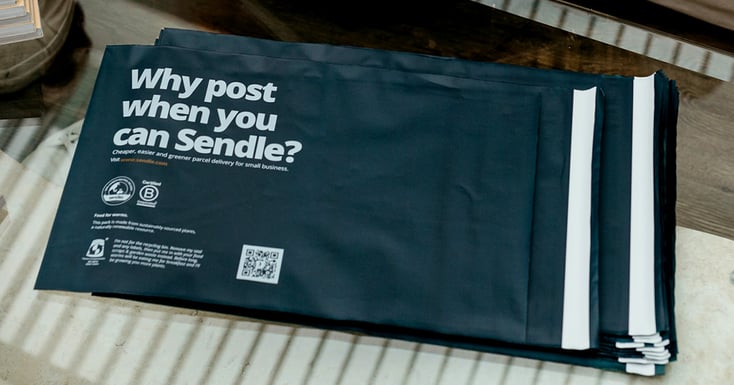Affordable shipping can make or break a sale. That’s not news for small businesses.
Recent research found that 81% of Australians have abandoned a purchase because shipping fees are too expensive, while 84% are more likely to buy from a store that offers free shipping. Of course, offering shipping rates below those given by your courier provider cuts into your profit margins.
The solution is to get strategic with your shipping options.
Shipping strategies unpacked
Strategic shipping isn’t about offering free shipping on every sale. Customers aren’t afraid to shop around for cheaper products (38% of Australians have abandoned carts for this exact reason) so packing the cost of shipping into the product price isn’t the solution.
Instead, a solid shipping strategy considers multiple ways of offering more choice and affordability to customers. For many businesses, there’s no one solution and a multi-faceted approach is required.
So, let’s talk about the things you should consider when building out your shipping strategy.
1. Start with affordable shipping rates
The starting point is making sure you’re getting the best rates for your business. To do this, you want to look not just at baseline prices, but rates that drop as your business grows, and routes that suit where your customers are located.
With Sendle’s Ship & Save, the more you ship, the more you save, with rates dependent on your monthly spend. You also benefit with Sendle’s special Near Metro and Near Capital zones, ensuring shipping outside of your own capital city doesn’t fall into regional or interstate pricing categories.

“AusPost charges 41 cents more per 500g parcel I send within Sydney. By switching to Sendle, and thanks to Ship & Save, every parcel I send (it’s a lot of 250g and 500g parcels) gets me closer to even bigger discounts. I’m a big fan of that!”
~ Andres Herrero, Founder, Sydney Sock Project
2. Compare shipping pricing on every parcel
Shipping solutions like ShipStation, Starshipit and ReadyToShip integrate directly with many eCommerce platforms and fulfilment solutions. They help you optimise workflow, automate shipping and save time, but also compare the cost of shipping each sale based on weight and location to nab you the best deal every time.
Sendle’s already integrated with ShipStation, Starshipit, ReadyToShip and many other shipping solutions to make things easy.
3. Ensure you’re using the right weight break
The most common shipping weight bracket in Australia is 500g. It’s also the starting point for many couriers. But for many businesses, parcels weigh way less and they’re paying for empty space.
Sendle’s 250g Pouch is perfect for all those smaller sales, like t-shirts, socks and makeup, and gives you much cheaper rates (starting as low as $4.70*) than the standard 500g.

4. Give customers more options
In most cases when a customer orders online, they want their purchase in their hot little hands as quickly as possible. But not all customers are so impatient.
Giving customers the choice between standard and express shipping at checkout can reduce that immediate “OMG!” reaction to high shipping costs as they can immediately see there’s another way.
![]()
“Successful retailers will be the ones that are most agile and able to optimise their shipping to provide a more varied selection of the delivery services at checkout. Online shoppers have come to expect choices in a range of options for delivery that best suit their needs at the time of purchase, like same day, next day and click and collect. It can significantly reduce cart abandonment just by having a couple more options.”
~ David Boyer, VP & General Manager ANZ, ShipStation
5. Run the numbers on free shipping
Every customer wants free shipping, and they’re often willing to meet your requirements for it. To work out if free shipping is an option for your business, you’ll need to do a little maths.
- Calculate your margins. Factor in margins on individual items, average cart margins, and the lifetime value of a repeat customer. And check this against your overheads!
- Ask “What’s the most we can lose?” Run through those numbers again, determining how much you could take from your margins to fully or partially cover the cost of shipping for your customers.
- Test your assumptions. Measure your financial risk by testing it on a small scale first. Try sending a free shipping promo code to a segment of your customer base and measure their response to it, including any increase in your average order value.
Once you know the numbers and how customers respond, you can look at offering free shipping:
- As part of a loyalty program for repeat customers – perhaps with a nominal annual membership fee.
- When a minimum cart value or spend is reached.
- On specific items with higher margins.
- For a limited time during peak season sales.

“We’ve found free shipping definitely affects cart abandonment and AOV (average order value). AOV is dependent on your products. If your best seller is $80 and free shipping starts at $75, it won’t affect your AOV but it will improve your abandonment rate. If your best sellers are $80 and free shipping starts at $100, you won’t see improvements in your abandonment rate but you will with your AOV.”
~ Eugene Cheng, Founder, The Sneaker Laundry
Stay on top of the trends
Achieving an ideal cart conversion rate is a never-ending journey as customer expectations and technology evolve.

Staying on top of the latest research from industry experts and success stories from your peers will help you continuously reduce your cart abandonment rates. And a great place to start is with our recent webinar with ShipStation and Go for Zero.

* Including GST, excluding fuel surcharge for same-city on Ship & Save Level 6.
